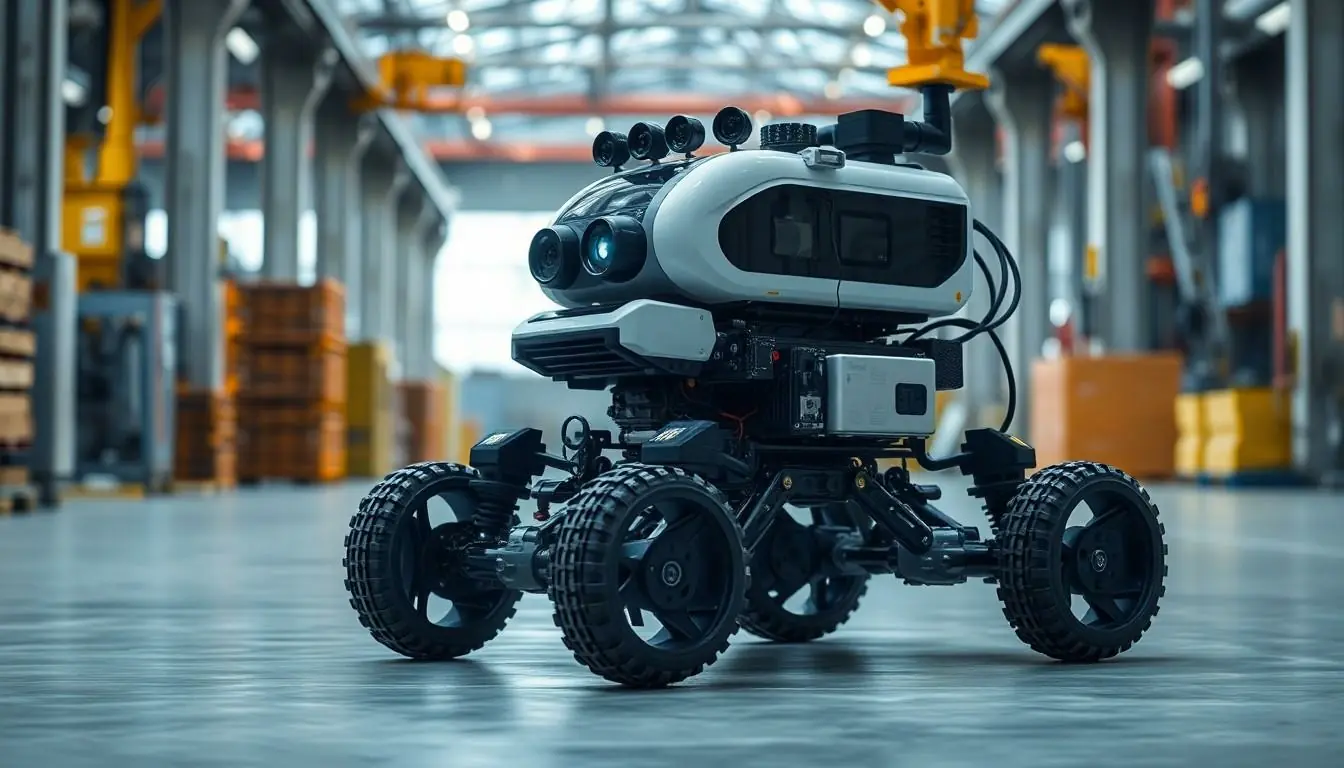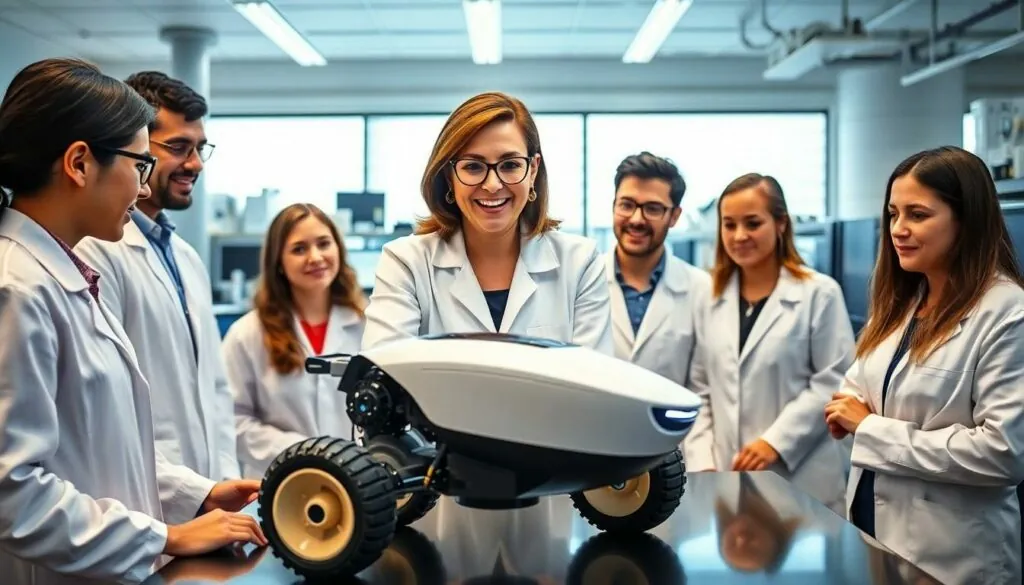Table of Contents
ToggleIn a world where robots are no longer just the stuff of sci-fi movies, autonomous robotics is leading the charge into the future. Imagine a world where machines can think for themselves, navigate complex environments, and even make decisions without human intervention. Sounds like a plot twist, right? But it’s happening now, and it’s not just about building the next generation of vacuum cleaners that can avoid your dog’s toys.
Overview of Autonomous Robotics
Autonomous robotics encompasses machines capable of operating independently in diverse environments. These robots utilize advanced algorithms and sensors to perceive surroundings and make real-time decisions. They can navigate through complex terrains, execute tasks with precision, and adapt to varying situations without human guidance.
Data from 2023 indicates that the global market for autonomous robots is projected to reach $90 billion by 2027. Various industries, including manufacturing, healthcare, and logistics, are rapidly integrating these technologies to enhance efficiency and reduce costs. For instance, autonomous drones are increasingly used for deliveries, while robotic surgical systems perform precise medical procedures.
Robots perform tasks in unpredictable conditions, utilizing machine learning to improve their performance continually. Navigation systems, such as LiDAR and computer vision, allow robots to map their environment and identify obstacles effectively. High-performance computing supports real-time data processing, enabling quicker decision-making.
Several notable examples showcase the capabilities of autonomous robots. Self-driving vehicles utilize a combination of sensors, cameras, and artificial intelligence to navigate safely on roads. Agricultural robots automate complex tasks like planting and harvesting, contributing to increased food production.
With advancements in artificial intelligence and robotics, the future holds even more potential for these machines. They may evolve to interact seamlessly with humans, collaborating in various fields and everyday life. The evolution of autonomous robotics signifies a leap forward in technology, reshaping how industries and societies function.
Key Technologies in Autonomous Robotics

Autonomous robotics relies on several key technologies that enable machines to operate independently and effectively in various environments.
Machine Learning and AI
Machine learning and artificial intelligence play crucial roles in autonomous robotics. These technologies enable robots to analyze data and adapt their behaviors based on experiences. Algorithms process vast amounts of sensory information to inform decision-making. With the ability to learn from patterns, robots enhance their operational efficiencies over time. Continuous learning equips them to tackle unexpected challenges in real time. Different industries, including healthcare and manufacturing, utilize these advancements to achieve greater automation and precision.
Sensor Technology
Sensor technology forms the backbone of autonomous robots’ perception capabilities. LiDAR, cameras, and ultrasonic sensors contribute to environmental mapping and obstacle detection. Each sensor type provides specific data points, enhancing robots’ situational awareness. LiDAR generates high-resolution maps of surroundings, while cameras enable visual recognition tasks. Ultrasonic sensors detect distances, informing navigation processes. These technologies collectively allow machines to interact with their environments intelligently. Research indicates that the fusion of multiple sensor types leads to more accurate and reliable operational outcomes in autonomous applications.
Applications of Autonomous Robotics
Autonomous robotics has diverse applications across various sectors. Each application highlights the capabilities of these machines to operate independently, making them vital in modern innovations.
Industrial Automation
Industrial settings benefit greatly from autonomous robotics. Robots streamline processes, increase production rates, and minimize human error. For instance, automated guided vehicles (AGVs) transport materials efficiently within factories. Furthermore, assembly line robots perform repetitive tasks with precision, improving product quality. With autonomous systems, manufacturers can respond swiftly to market demands, reducing downtime. Recent statistics indicate that the adoption of robotics in manufacturing can boost efficiency by up to 30%. The integration of these technologies leads to safer working conditions and lower labor costs in industrial environments.
Healthcare Solutions
In healthcare, autonomous robots enhance patient care and surgical precision. Robotic surgical systems perform complex procedures with minimal invasiveness, allowing quicker recoveries. Nurses use robotic assistants to manage routine tasks, granting them more time for patient interaction. Notably, telepresence robots enable doctors to consult patients remotely, expanding access to medical expertise. Data shows that robotic systems can reduce surgical complications by 20%. The incorporation of autonomous robotics is revolutionizing healthcare delivery, increasing efficiency, and ultimately improving health outcomes.
Challenges Facing Autonomous Robotics
Autonomous robotics faces several significant challenges that impact its development and deployment. These obstacles include technical limitations and ethical considerations that require careful attention.
Technical Limitations
Technical limitations greatly affect the performance and reliability of autonomous robots. Current algorithms struggle with complex decision-making in dynamic environments, resulting in potential safety risks. Sensor technology also faces constraints, as sensors can be sensitive to environmental factors, such as weather. Moreover, robots often require extensive computational power, which can lead to high operational costs. Issues with data security present another technical challenge, where vulnerabilities can expose systems to cyber threats. As the technology evolves, addressing these limitations remains crucial for ensuring safer and more effective autonomous systems.
Ethical Considerations
Ethical considerations present another challenge to the advancement of autonomous robotics. Questions arise regarding accountability when robots make mistakes, particularly in sectors like healthcare and transportation. Privacy concerns also surface, especially when robots collect data during operations. Fairness in AI algorithms must be prioritized, as biased systems can reproduce inequalities. Transparency in decision-making processes is necessary to maintain public trust in these technologies. Balancing innovation with ethical implications is essential for the sustainable integration of autonomous robotics into daily life.
Future Trends in Autonomous Robotics
Technological advancements in autonomous robotics show a promising future with increased integration across various sectors. The global market is expected to reach $90 billion by 2027, reflecting rapid adoption rates. Industries prioritize efficiency improvements, and applications like autonomous drones for deliveries and robotic surgical systems in healthcare exemplify this trend.
Emerging technologies are set to enhance the capabilities of autonomous robots. Machine learning plays a pivotal role in enabling robots to analyze data, adapt, and improve performance. Sensor technology, including devices such as LiDAR and cameras, contributes to better environmental mapping, allowing robots to navigate complex scenarios.
Shifts in application areas highlight how autonomous robots are becoming integral to everyday life. In healthcare, enhanced patient care through surgical precision underscores the impact of robotics. Statistics indicate that the use of robotic systems can reduce surgical complications by 20%, benefiting both healthcare professionals and patients.
In industrial sectors, autonomous robots streamline operations and minimize human error. Reports suggest that these technologies can boost efficiency by up to 30%. As companies continue to invest in automation, the demand for skilled personnel to manage and integrate these systems will grow.
While the future holds significant potential, challenges persist. Technical limitations still hinder performance in dynamic environments. Ethical considerations raise important questions about accountability and data privacy as reliance on autonomous systems increases.
Balancing innovation and ethical implications remains crucial for the sustainable adoption of these technologies. As autonomous robots evolve to interact seamlessly with humans, fostering trust through transparency in decision-making becomes essential. Continuous advancements in artificial intelligence will undoubtedly shape how industries and societies function, driving the future of autonomous robotics forward.
The evolution of autonomous robotics presents a transformative opportunity across multiple sectors. As these machines continue to advance in intelligence and capability, their impact on industries like manufacturing and healthcare becomes increasingly profound. With the market projected to reach significant heights, the integration of autonomous robots is set to redefine operational efficiency.
However, the journey is not without challenges. Addressing technical limitations and ethical concerns will be crucial in ensuring these technologies enhance human life rather than complicate it. As the landscape of autonomous robotics evolves, fostering trust and transparency will play a pivotal role in shaping its future. The potential benefits are immense, but a balanced approach will ensure a harmonious coexistence between humans and robots.




